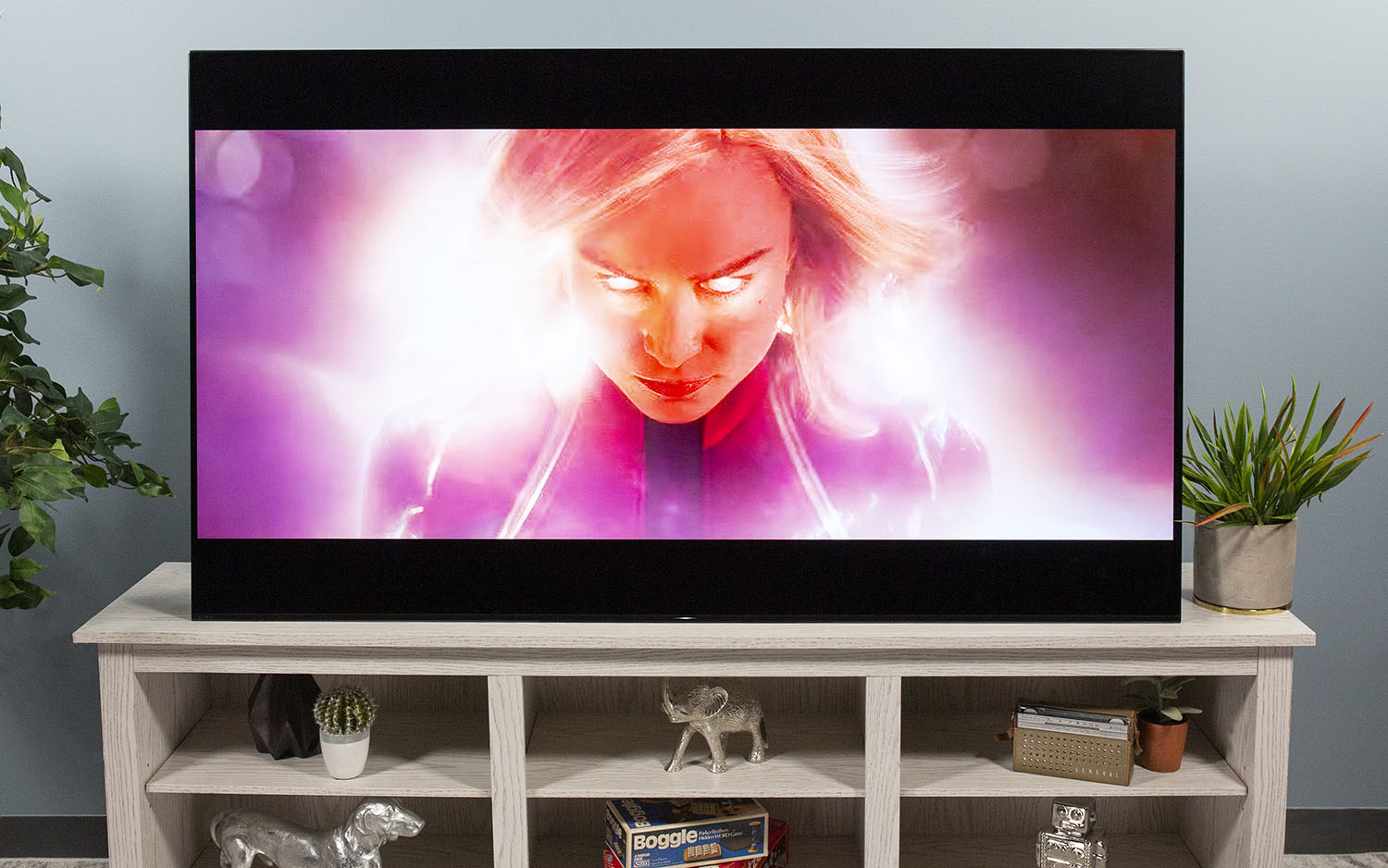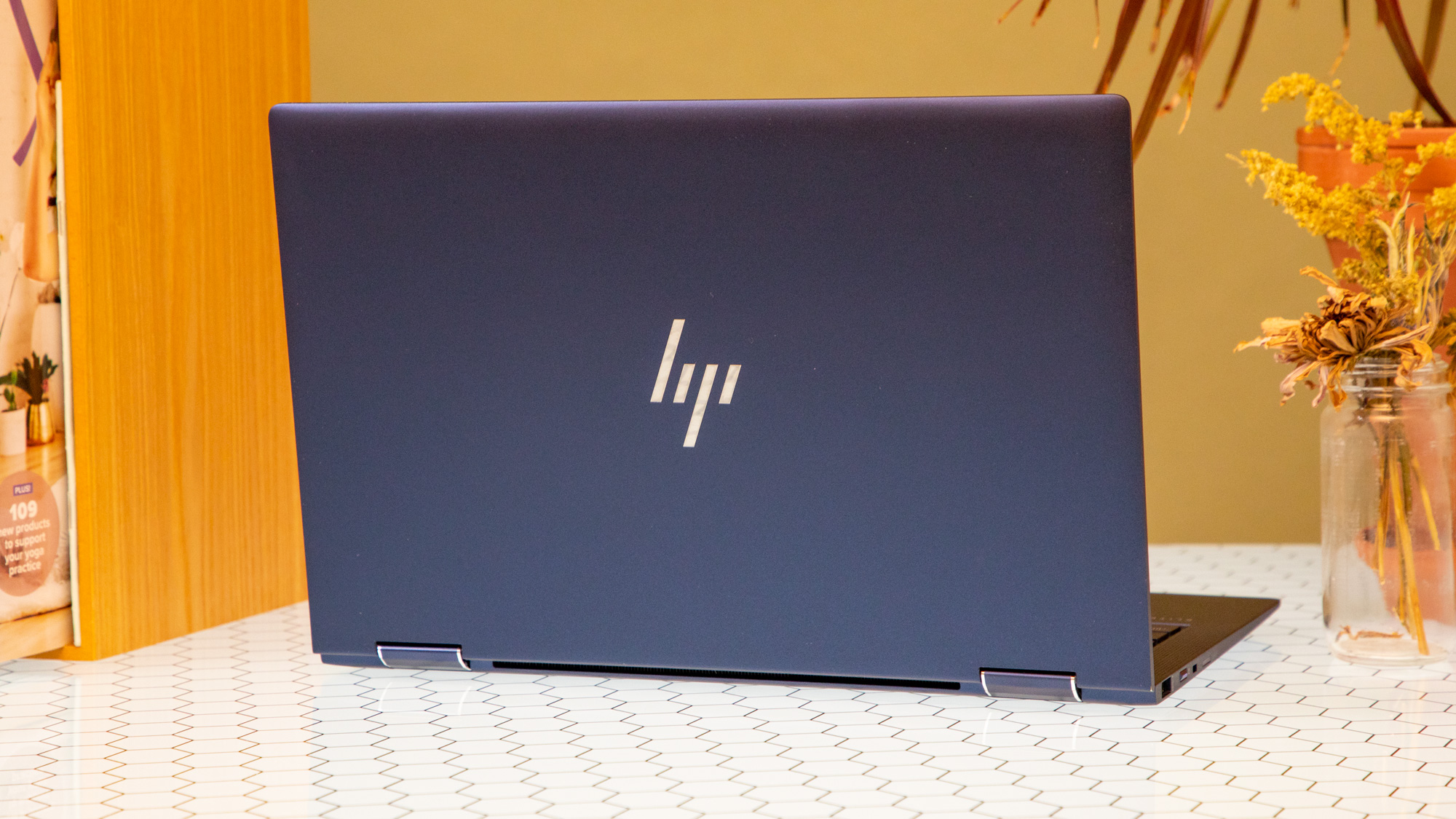Tom's Guide Verdict
The Sony Master Series A9F OLED TV is one of the best OLED TVs on the market, and blows away the competition with its great picture quality, an innovative sound system and an improved version of Android TV. It's the best Sony TV we've seen and one of the best TVs on the market period.
Pros
- +
Superb OLED display
- +
Impressive HDR performance
- +
Acoustic Surface Audio+ sound system is amazing
- +
Android Oreo improves smart TV experience.
Cons
- -
Pricey, even for a premium TV
- -
Lean-back design is awkward
- -
Disappointing remote control
Why you can trust Tom's Guide
The Sony Master Series A9F OLED TV ($4,499) is one of the best TVs that Sony offers, combining an excellent OLED display with impressive audio, an improved version of Android TV and a feature set that matches the best TVs on the market.
As the second generation of OLED from Sony's Bravia lineup, it's not just a flagship premium TV, it's a study in how well small improvements in feature sets and display panels and sound can combine to make a superb TV. It's one of the best TVs you can buy, if you can afford it.
Sony Master Series A9F OLED TV Specs
| Price | $4,499.99 |
| Screen Size | 65 inches |
| Resolution | 3,840 x 2,160 |
| HDR | HDR10, HLG, Dolby Vision, IMAX Enhanced |
| Refresh Rate | 120Hz |
| Ports | 4 HDMI, 3 USB |
| Audio | Acoustic Surface Audio+ (3.2 channel) |
| Smart TV Software | Android TV 8.0 |
| Size | 57.1 x 32.9 x 3.4 inches [w/ stand closed] |
| Weight | 60 pounds [w/o stand] |
Design
The Master Series A9F is the latest from Sony, part of the Master Series line that was launched in mid-2018. But despite its newness, it has a design that borrows heavily from a 2017 favorite, the Sony Bravia A1E. Like the Sony A1E, the Master Series A9F uses an easel-style kickstand to prop up the TV, instead of traditional attached feet. The result is a screen that sits flush with whatever table or piece of furniture it's set on, but it also means that the set leans back a bit, putting the display at an angle.
The front view of the TV is nearly all screen, with a 0.3-inch bezel around the top and sides of the display panel, and a slightly thicker 0.5-inch bottom bezel that also serves as the foot of the TV. The bezels are trimmed in black brushed metal, and a single, subtle Sony badge in the lower left corner is the only branding on the nearly bezel-less design.
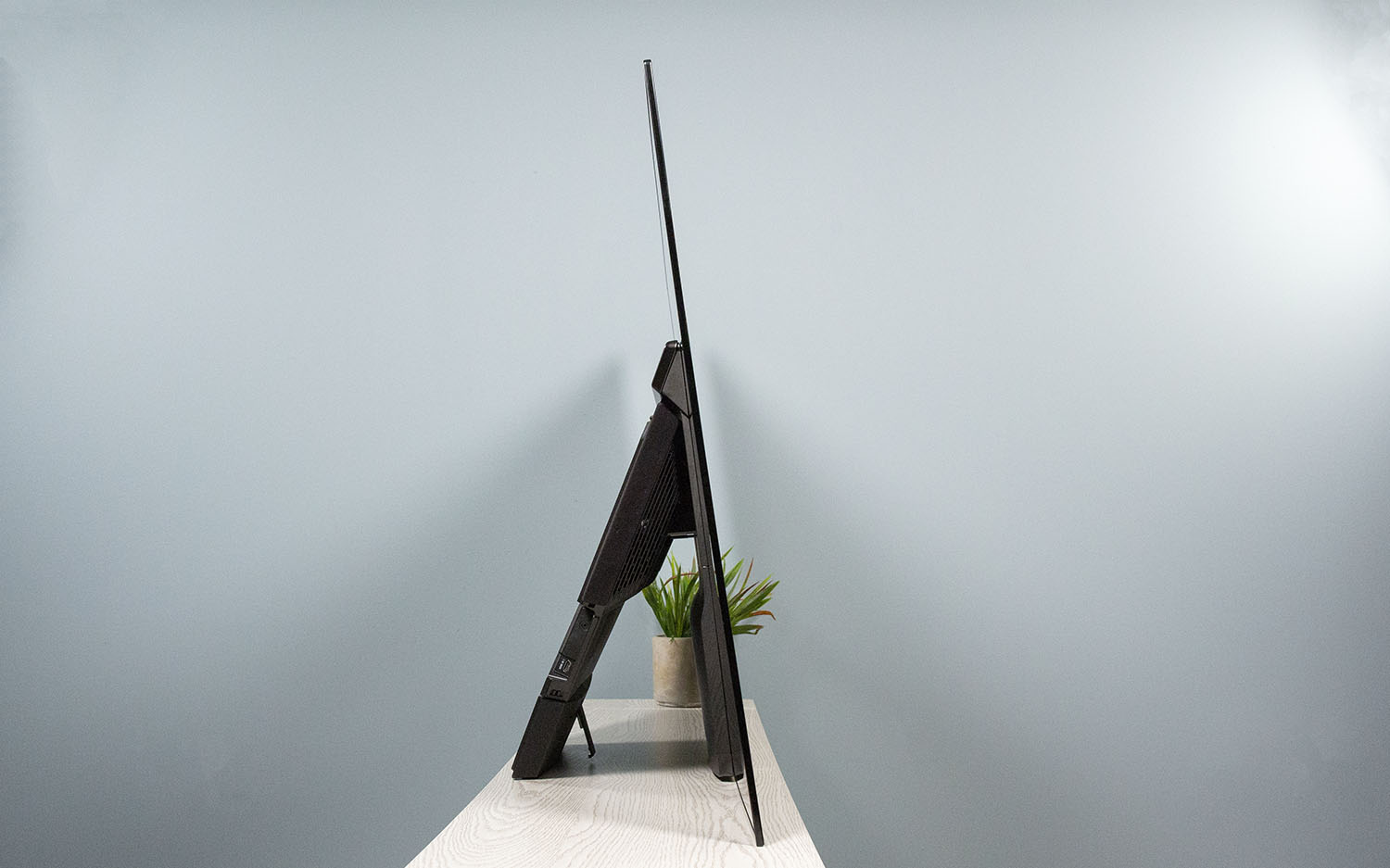
The angled kickstand in back isn't just there to prop up the screen. It also houses a fair bit of the TV hardware, from a covered connector panel to an integrated subwoofer. The rear stand adds significantly to the overall thickness of the set, and when fully extended, it brings the A9F to a significant 12.6 inches at the widest. The result is a pretty sizable footprint compared with most 65-inch TVs.
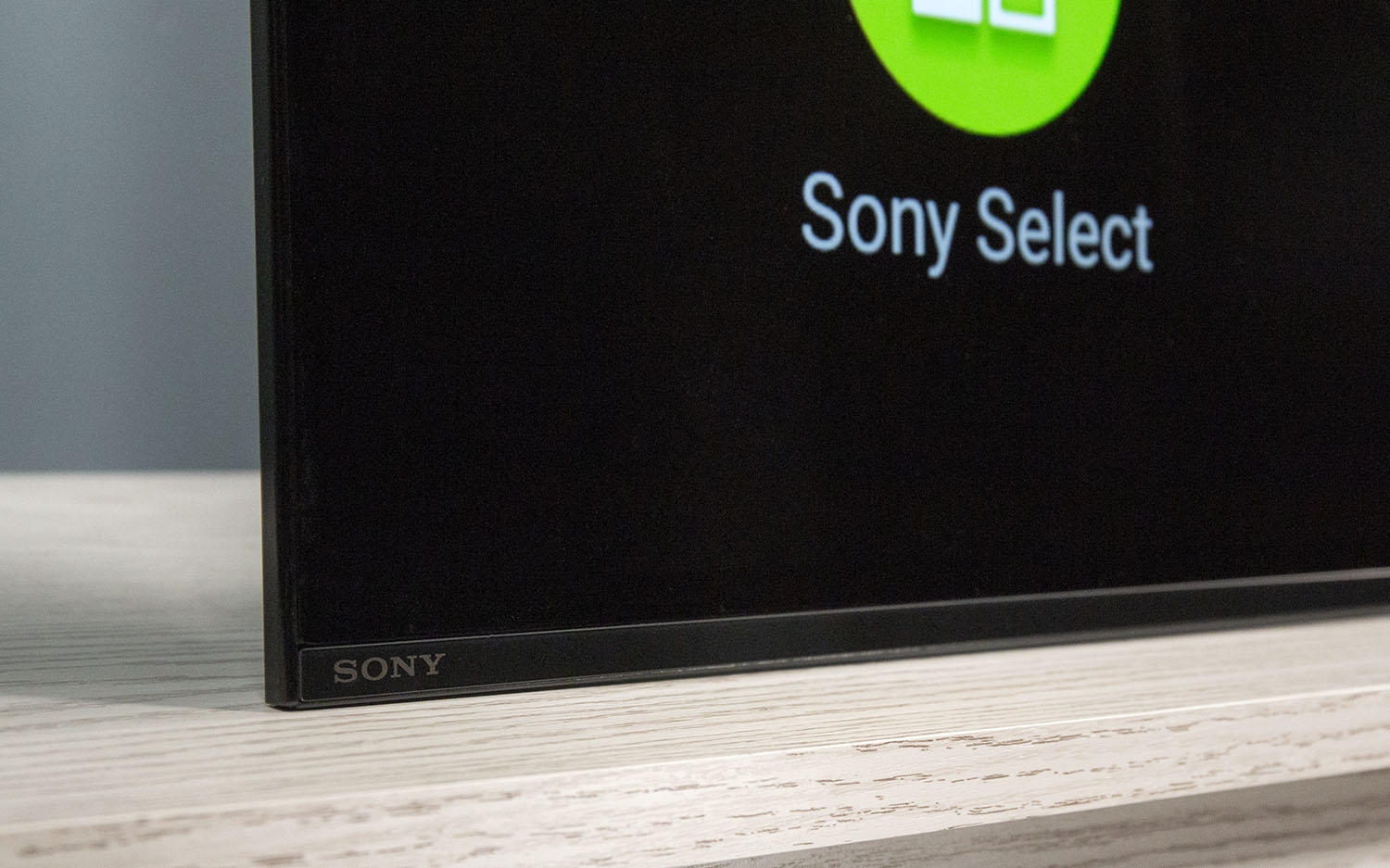
And, because the TV rests directly on the surface of the table or stand that it's on, there's no usable space beneath or in front of the TV. If you're used to tucking a streaming box or game console into the gap left by most TV stands, you'll need to figure out something else for the Sony A9F.
MORE: Best 4K TV - Reviews and Comparisons, From Budget to HDR
Without the stand extended, the A9F measures 57.1 x 32.9 x 3.4 inches. The stand itself cannot be removed, but it does have a weighted foot that is used in kickstand mode, but should be taken off for any wall-mounted setup. The A9F can accommodate a 400-millimeter x 200-millimeter VESA mounting bracket, but due to the thickness of the attached kickstand, it can't be mounted flush against the wall.
Ports and Connections
The Master Series A9F OLED is outfitted with a wide selection of ports, with everything you need to connect your home theater equipment. The set is equipped with four HDMI ports – three on the stand (including one with ARC support) and one on the side of the TV – an RF antenna connector, three USB ports (two on the stand, one on the side of the TV) and a composite video input. There's an optical port for digital audio, a pair of speaker connectors and a 3.5-millimeter headphone jack.
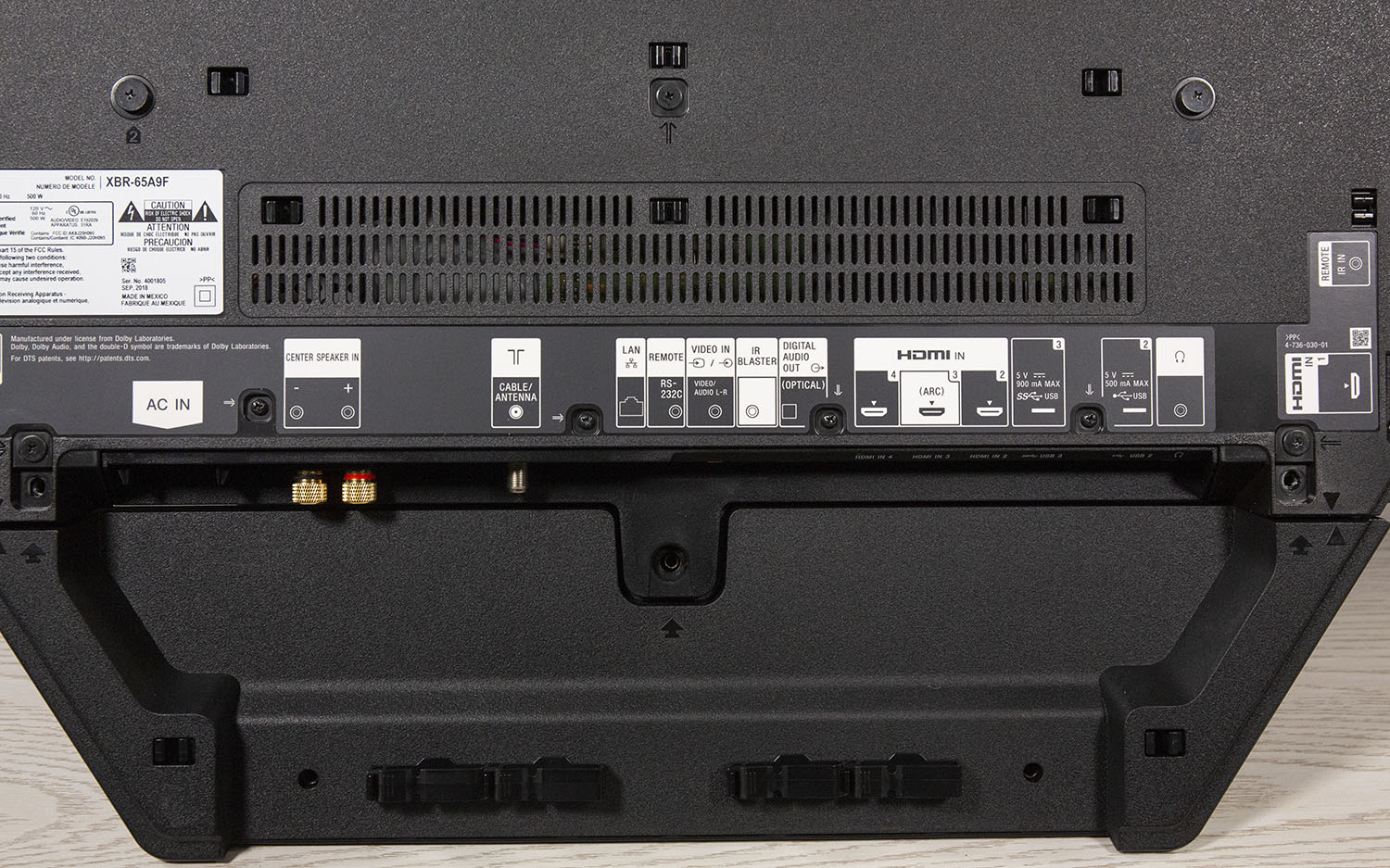
An Ethernet port is there for wired network connectivity, along with 802.11ac Wi-Fi, Bluetooth 4.2 for headphones and speakers and built-in Chromecast for sharing content from another device.
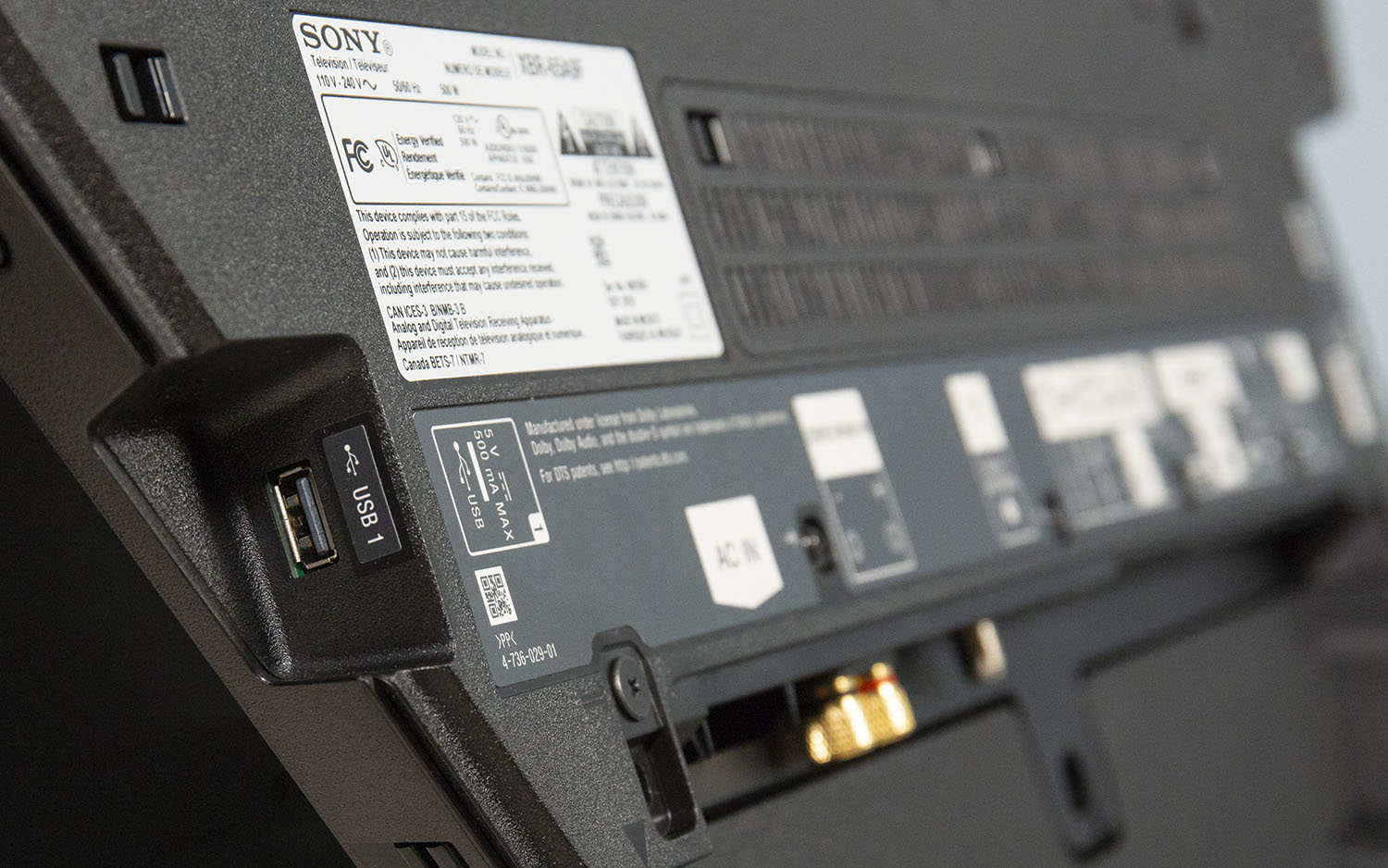
Display and Performance
The Sony Master Series A9F combines Sony's sophisticated video-processing hardware with a beautiful OLED panel to offer one of the best viewing experiences we've seen on a 4K TV. The A9F comes in 55- and 65-inch sizes (we reviewed the 65-inch model), with a 3840 x 2160 resolution OLED display that has a 120Hz refresh rate. Sony has packed the Master Series A9F with all the video processing and optimizing tricks it has, from the Picture Processor X1 Ultimate (Sony's top-of-the-line image-processing chip) to Sony's Triluminos Display, which maps images from a wider color palette, to the Pixel Contrast Booster, which emphasizes the contrast offered by OLED's perfect blacks and uses object-based enhancement that makes on-screen objects more distinct.
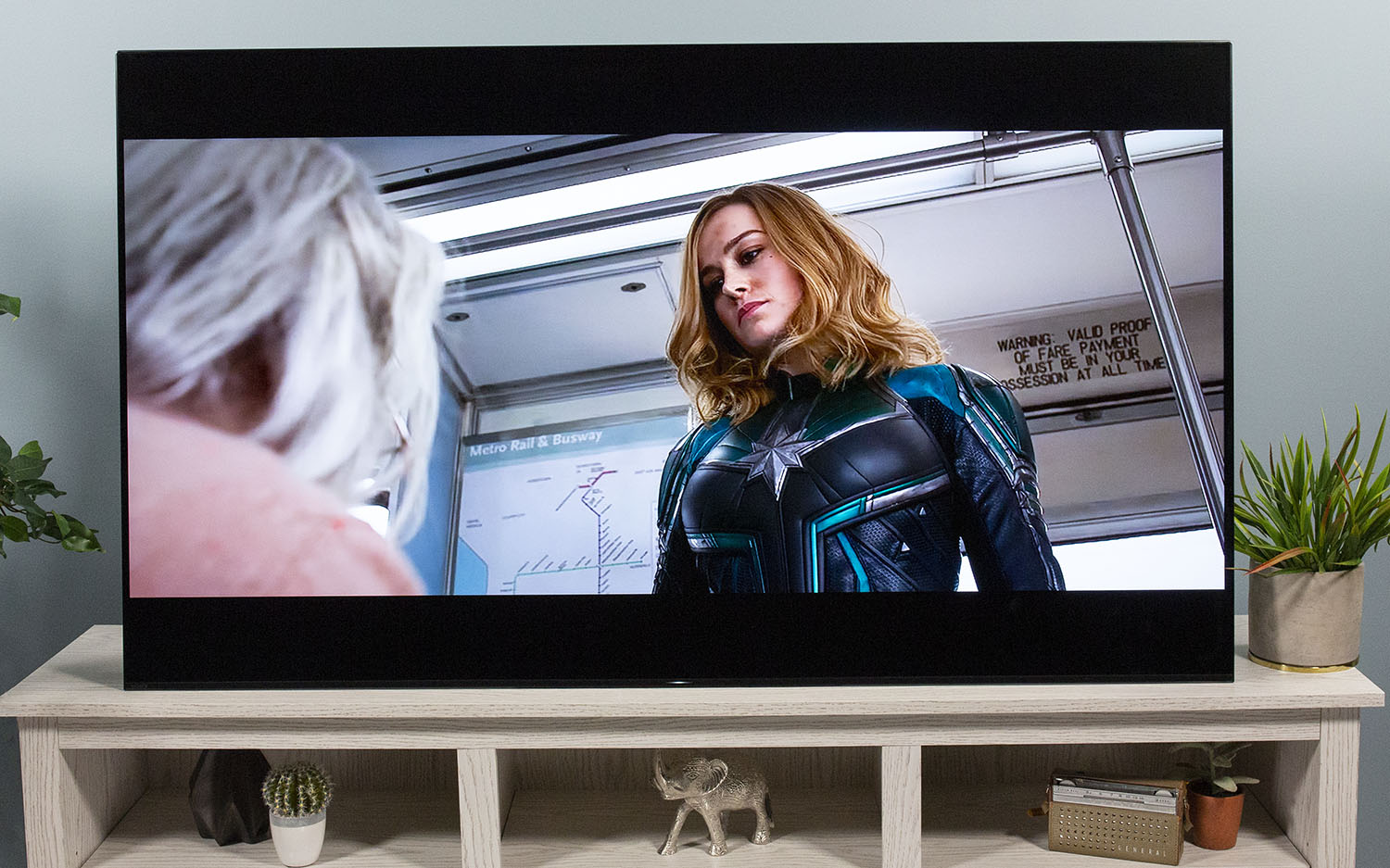
When I watched scenes from The Shallows, the surf-and-shark-attack film was filled with bright sandy beaches and brilliant green water. The sharp 4K resolution meant that I could spot individual grains of sand on Blake Lively's face. In addition, colors popped, with vibrant blues and greens, brightly colored surfboards and lurid red splashes of blood.
In our testing, the Master Series A9F produced 130.8 percent of the Rec. 709 color gamut, the best of any TV we've seen in the crop of current TVs. That result is better than the Samsung Q9FN QLED TV (99.94 percent) and the LG 65SK9500 Super UHD Smart TV (99.96 percent). It's even better than the top models from 2017, like the LG E7 OLED TV (99.99) and even the Sony Bravia XBR-A1E (127.4), which has long been our pick as the best picture quality on the market.
The Sony turned in a decent color-accuracy score, with a Delta-E rating of 3.5. That's close enough to what you would expect on a calibrated TV, and is fairly impressive for out-of-the box testing. However, it's not quite as precise as the colors offered on the Samsung Q9FN QLED TV (2.55) or the LG 65SK9500 Super UHD Smart TV (3.04) and it's nowhere near as good as the Sony Bravia XBR-A1E (1.9). But while instrumental test results place it a half step behind the best TVs on the market, in actual viewing the picture is superb. Even compared side-by-side with the Samsung Q9FN, the color looks very, very good.
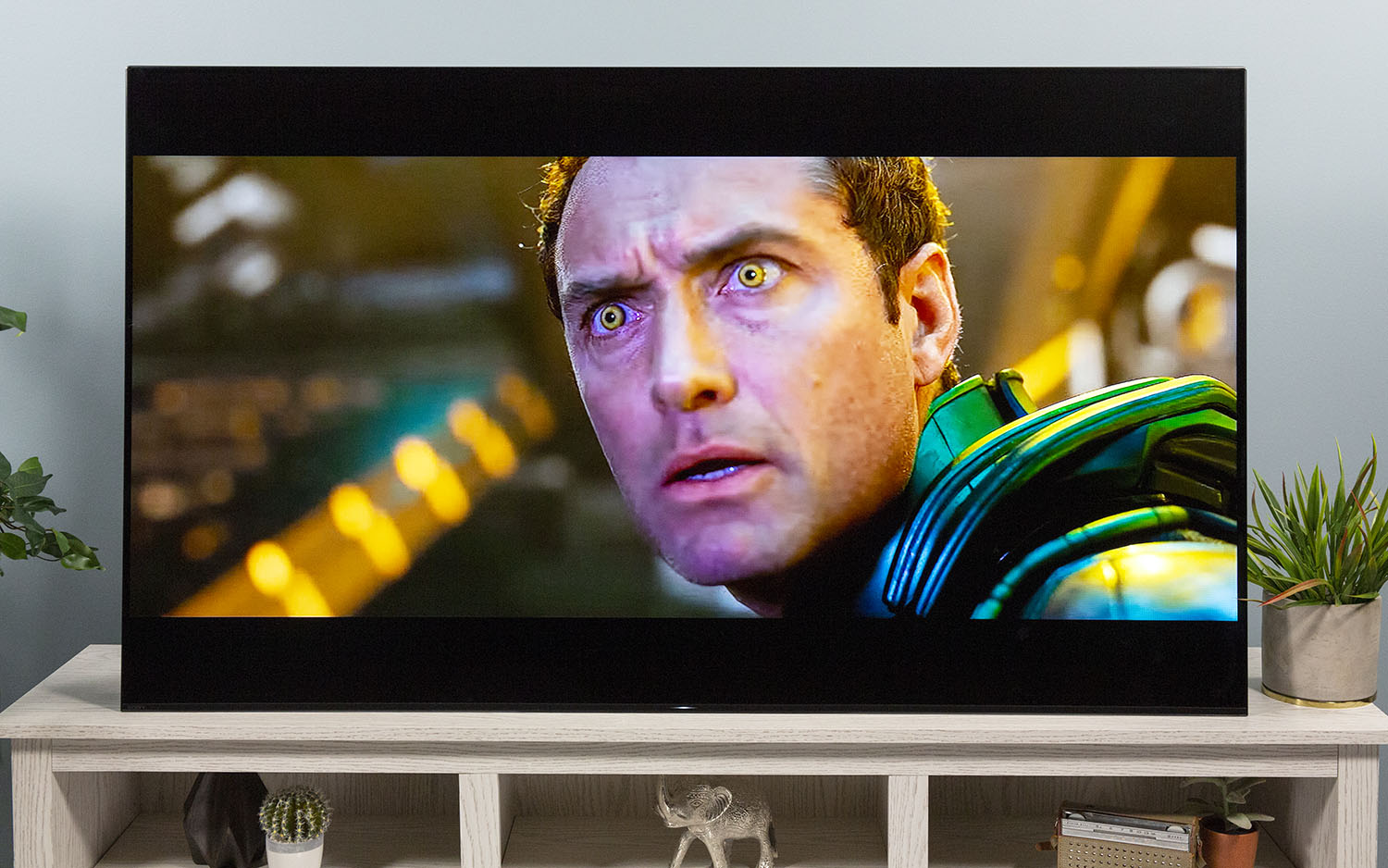
The A9F also boasts some great high dynamic range support, with basic formats like HDR10 and HLG supported, along with Dolby Vision and the brand-new IMAX Enhanced format, which has its own standards for color, contrast and picture clarity.
Watching Blade Runner 2049 on the A9F, I was able to see just how excellent the per-pixel illumination offered by OLED can be. A shot of glowing embers kicked up from a fire produced a perfect glow without any haloing, with each pinpoint spark surrounded by uniform black sky, something I have not seen any LCD TV match.
Watching Blade Runner 2049 on the A9F, I was able to see just how excellent the per-pixel illumination offered by OLED can be.
In darker scenes, shadows were deep and rich, without drowning out subtle details. Some OLED TVs will struggle with crushed blacks, where anything below a certain brightness becomes a single, undifferentiated black mass; the A9F had none of these issues. Whether it was a nighttime fight in Spider-Man: Homecoming or a tense showdown in an abandoned casino in Blade Runner 2049, the A9F handled shadows and near-black shades without any problems.
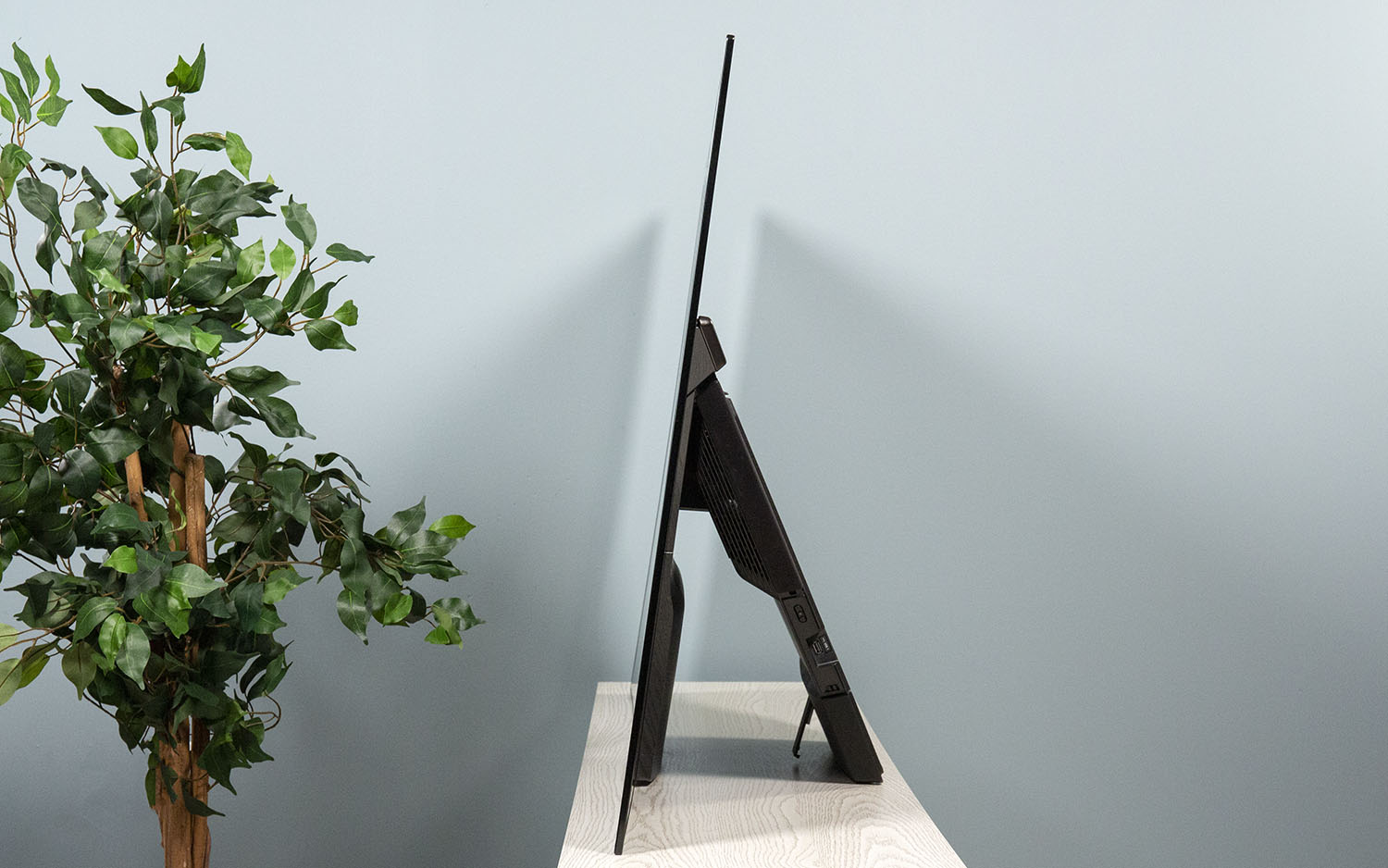
When connected to our Xbox One X, the A9F supported 4K gaming at 60Hz and could handle Dolby Vision content. Unfortunately, the set comes limited to 8-bit color by default; thankfully, some tweaking of the A9F's input settings opened up full functionality, and 10-bit color was supported, along with HDR10 content. That's why this is one of the best 4K gaming TVs around.
MORE: What Is OLED?
I'm thrilled that the A9F supports such a rich range of features, but the need to go through the TV's more arcane settings menus and enable these features has always rubbed me the wrong way. Ideally, features like higher bit depth and additional HDR formats would be supported automatically, which we've seen on other smart TVs.
Sound
Another cool feature that the Master Series picks up from the Bravia A1E is the Acoustic Surface Audio Plus, the updated version of Sony's impressive sound-from-screen audio technology. With three audio drivers directly behind the glass of the OLED display, the TV uses the glass panel as the vibrational surface of the speaker, literally producing sound with the 65-inch screen.
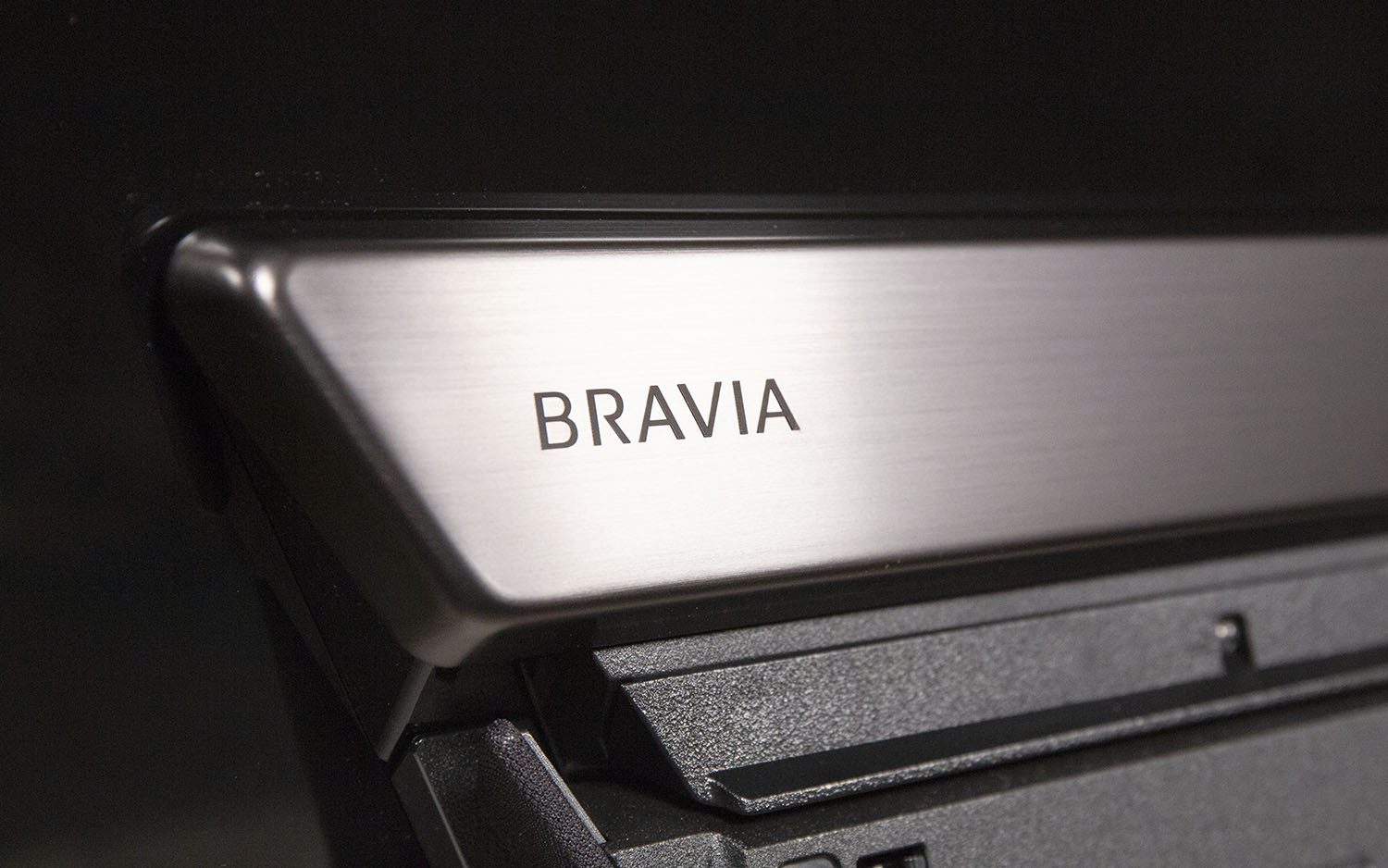
The result is impressive, with dialogue realistically coming directly from an actor on screen, sound effects tracking perfectly with on-screen actions, and even explosions sounding more realistic without the subtle separation between the visual and audio sources.
With three audio drivers directly behind the glass of the OLED display, the A9F uses the glass panel as the vibrational surface of the speaker. And the result is impressive.
Watching a tense scene of dialogue in Blade Runner 2049, I could tell that the audio was coming directly from the screen. The effect is distinct, and while we may not notice it on a conscious level when viewing most TVs, the brain definitely pays attention to where sound is coming from, and most TV audio has a distinct separation of the audio from the visuals, with sound coming from the right or left or from behind the TV. Sony's approach puts the sound right where it is supposed to be, and while the effect is subtle, it is effective.
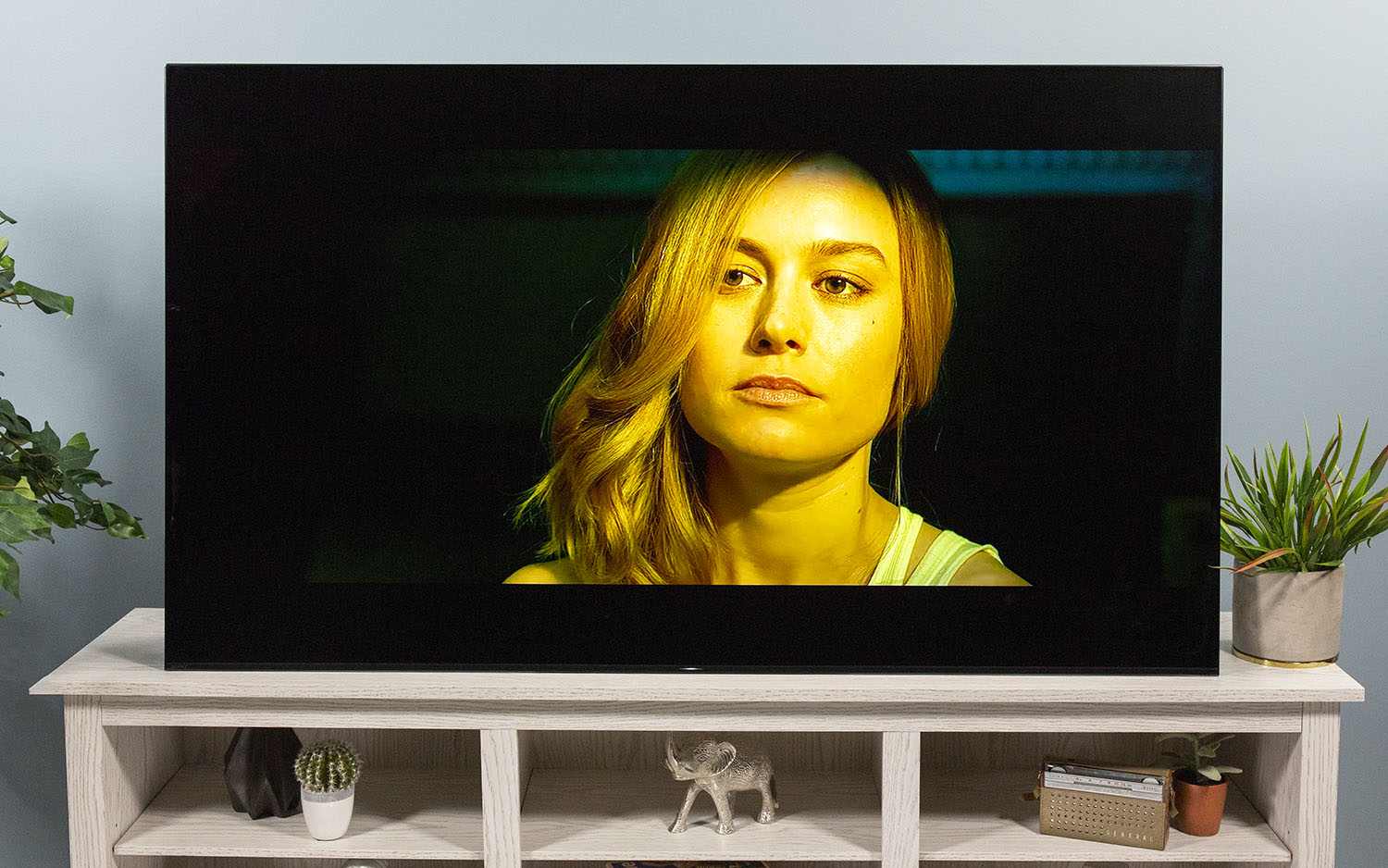
Setting aside the effectiveness of the sound from screen Tech, the A9F still offers excellent sound. The audio produced by the 65-inch TV scales from soft and subtle to rich and deep, with pounding bass thanks to a pair of built-in subwoofers. It all adds up to a 3.2 speaker system built into the TV, offering rich and varied sound. Between the excellent sound quality and the robust volume, this is one of the best audio experiences you'll get from a TV; no soundbar required.
In Blade Runner 2049, that translated into powerful sound effects and a deep rumbling to accompany the movie's excellent soundtrack. The sound quality is crisp and clear, with volume levels that easily filled our testing lab. Listening to Ariana Grande's "Thank U, Next," the clarity of Grande's vocals was sharp and clear, while the bassline came through with depth and impact.
Even better, you can set the A9F to use this as the center channel in a surround-sound setup, maintaining that sound-from-screen realism while also enjoying the more immersive experience of surround sound.
Smart TV Features
The A9F is also one of the first Sony Android TVs to ship with the newest version of the smart OS, code-named Oreo. Formally known as Android TV 8.0, the update keeps everything we liked about Android TV while fixing a lot of the things we didn't.
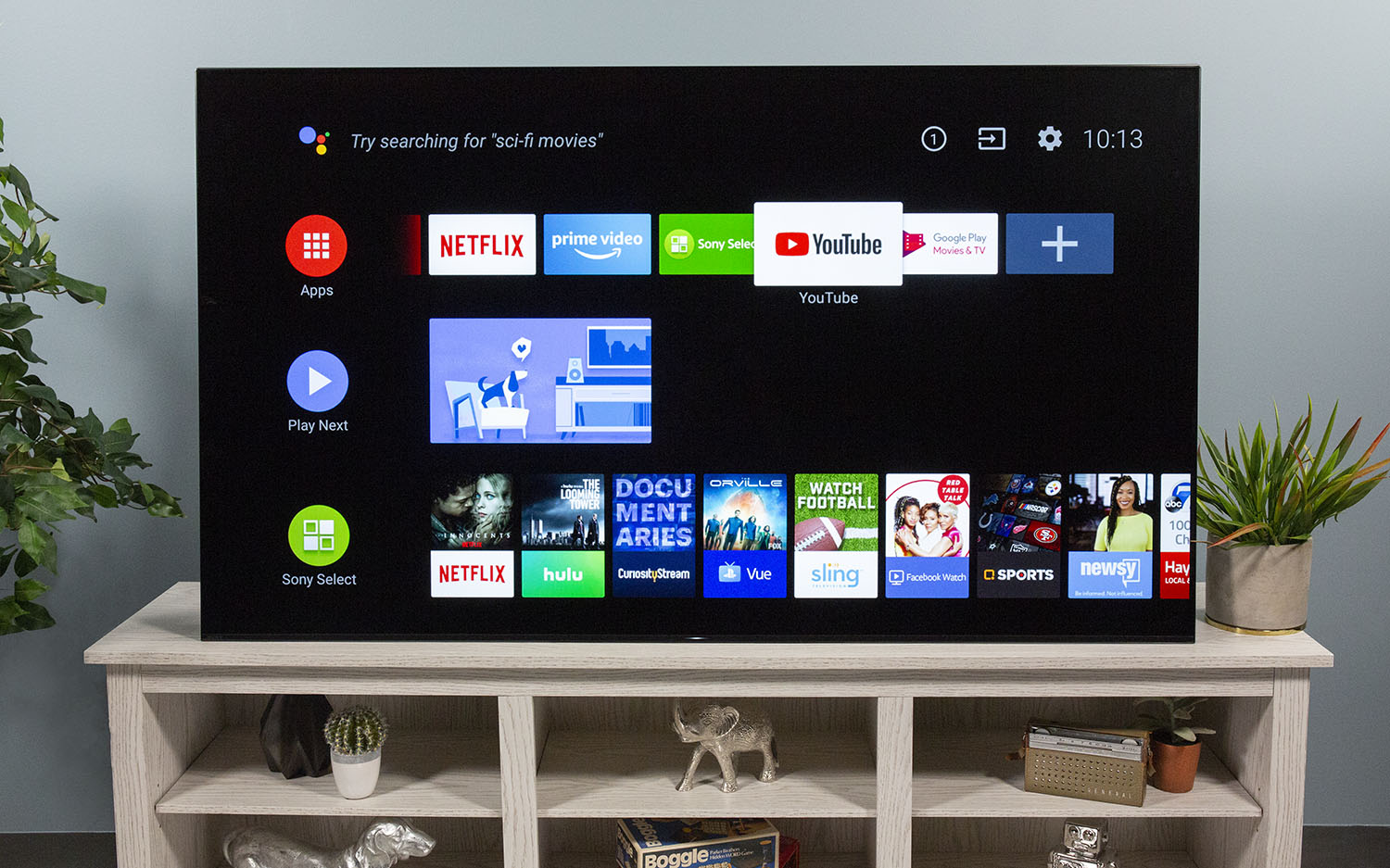
Past iterations of Android TV have had their rough spots. Performance was slow, and the occasional crash wasn't unheard of. The bigger problem was the home screen, which made you wade through row after row of apps and content recommendations to get to what you wanted to see. With Android TV 8.0, navigation is quick and fluid.
The new home screen still presents you with several rows of menus, but it starts with a full selection of your apps, and most of the rows are focused on single apps, offering suggested selections from Netflix or YouTube, based on your account and viewing history. While there are rows for featured content and tutorials about your new Bravia TV, the menu to customize your home screen can be accessed right from the home screen without having to sift through several layers of menus to find the right settings. It's a huge improvement for both Android TV and Sony's smart TVs.
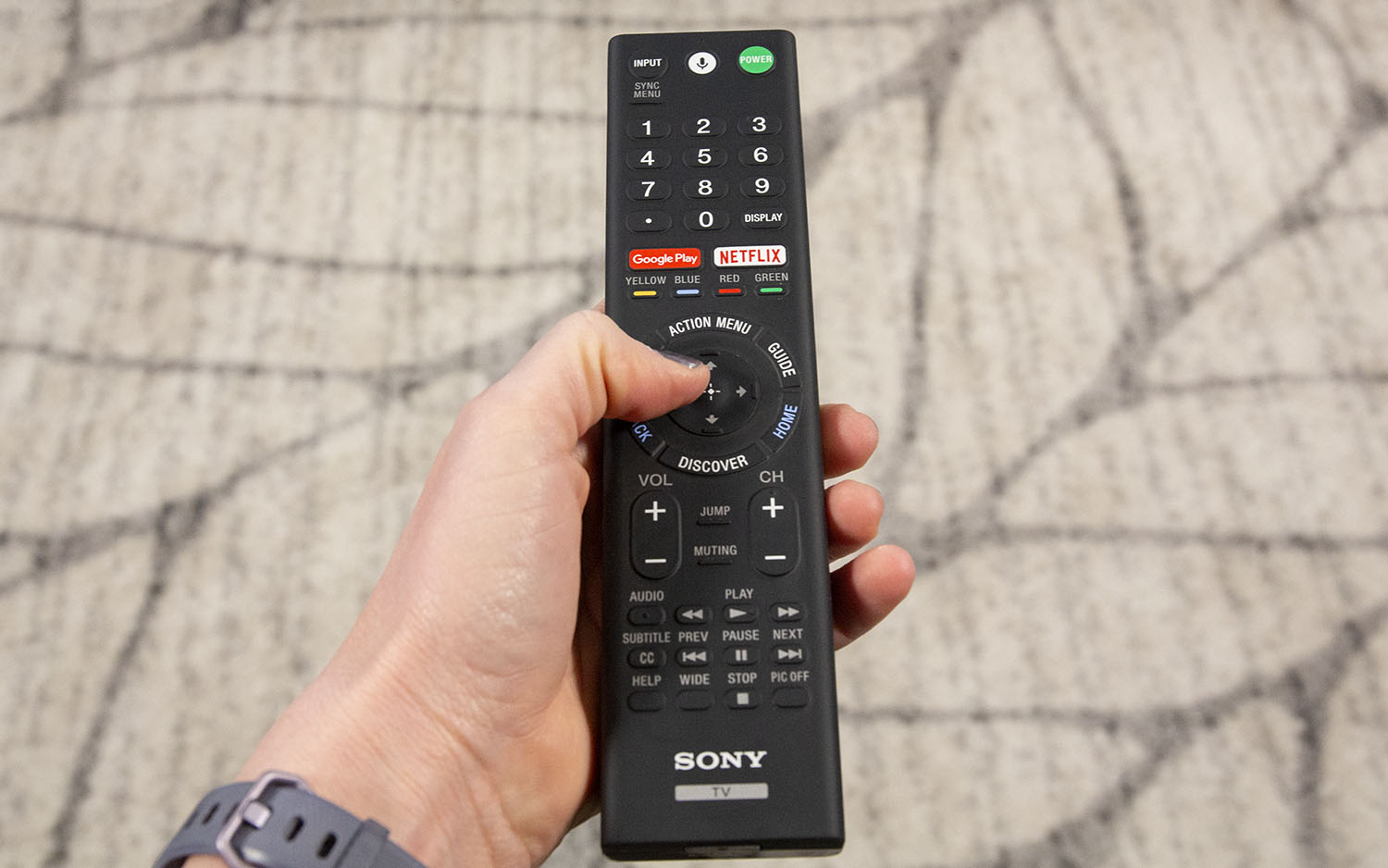
As an Android TV, the A9F also has some cool features built in. First is Google Chromecast, which makes it easy to share content between your smartphone and the TV, whether it's your own videos, streaming content from services like Netflix and Spotify, or screen-sharing for entire apps.
It also comes with Google Assistant capability, effectively making your TV a Google Home, which lets you search for content, find online information, use online services and even control smart-home devices. The significant difference from a stand-alone Google Home speaker is that the TV doesn't have the far-field microphones that let you openly speak into the air – you'll need to use the microphone built into the remote control, and you'll need to press and hold a button.
MORE: Best Smart Home Hub
If you want even more intuitive interaction, or just want your TV to work with your existing smart speaker, Sony's smart TV will also work with both Amazon Alexa and Google Home devices.
The only complaint I have is that Sony's Master Series A9F OLED TV, a premium model that sells for thousands of dollars, is still saddled with Sony's less-than-premium remote control designs. The boxy shape of the remote isn't particularly comfortable to hold, and the button-covered remote is a crowded mess compared with the sleek minimalism of remotes from Samsung and even Vizio. Here's hoping for better remote-control designs on Sony's 2019 TVs this spring.
Bottom Line
The Sony Master Series A9F OLED represents the pick of the litter from Sony's 2018 lineup, and it shows. The superb OLED panel offers rich color and deep black levels without sacrificing detail or brightness. The built-in audio is superb, offering 3.2 sound with room-filling volume without the need for a soundbar. And finally, the move to Android TV 8.0 makes for a better smart-TV experience all around.
The Sony Master Series A9F OLED still has its flaws, from the clunky remote-control design to a lean-back stand that may not work in some living rooms. But on the whole, the Sony Master Series A9F OLED is a worthy successor to the Sony Bravia OLED XBR-65A1E as our favorite Sony TV, and provides a great OLED alternative to the Samsung 65-inch Q9FN QLED TV.
Credit: Tom's Guide
Brian Westover is currently Lead Analyst, PCs and Hardware at PCMag. Until recently, however, he was Senior Editor at Tom's Guide, where he led the site's TV coverage for several years, reviewing scores of sets and writing about everything from 8K to HDR to HDMI 2.1. He also put his computing knowledge to good use by reviewing many PCs and Mac devices, and also led our router and home networking coverage. Prior to joining Tom's Guide, he wrote for TopTenReviews and PCMag.
